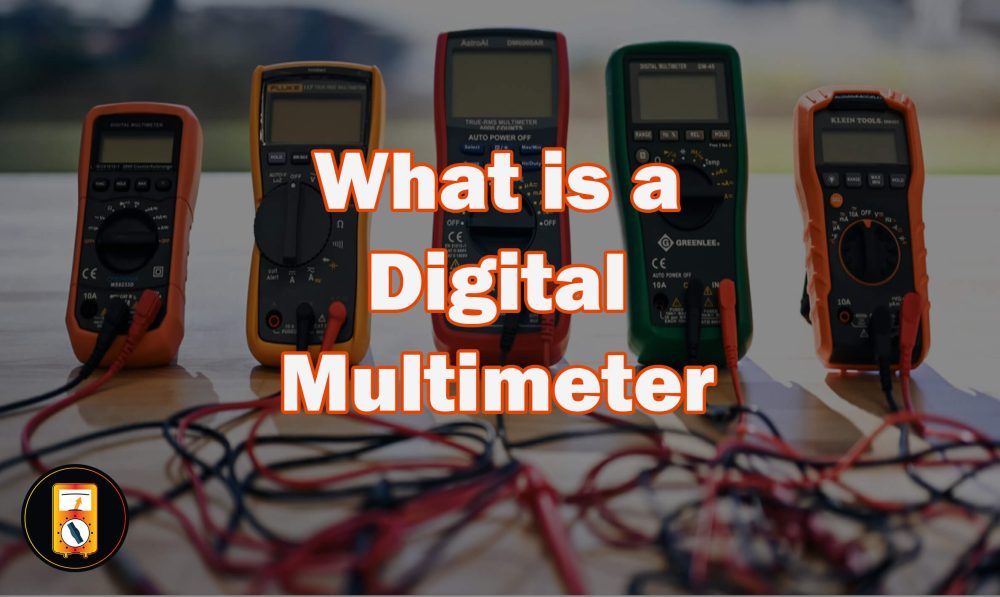Are you a DIY enthusiast looking to work with electrical components? Or are you just a regular person who wants to know what that negative voltage symbol means when you check your car’s battery power? In either case, knowing how to use a multimeter and interpret its readings is critical. Keeping track of your voltages can help you avoid accidents and diagnose common electronic problems. So keep reading if you want to learn the fundamentals of multimeters and what it takes for them to read negative voltage.
What is a Voltage?
Voltage, also known as electrical potential difference, is the measure of electric potential energy per unit charge. It is a fundamental quantity in electricity and electro-magnetism that lets us quantify the amount of work needed to move a charge between two points. Voltage can be thought of as pressure pushing charges from higher potential to lower potential energy.
In other words, it is the force that moves electrons through a conductor in an electric circuit. The greater the voltage, the greater the number of electrons moving and subsequently, the greater power available for use in circuits.
To measure voltage, we use voltmeters or multimeters which are devices used to measure volts (V), milliamps (mA), or ohms (Ω). Multimeters can also measure other parameters such as temperature and frequency. Voltage (V) is measured in kilovolts (kV), volts (V), or millivolts (mV).
What does negative voltage mean on a Multimeter?
When using a multimeter, it is important to pay attention to the sign of your voltage readings. A negative voltage reading means that the point you are measuring is lower than the point of reference—often ground or zero volts. This can occur in situations where one side of a circuit has been connected to the ground and the other has a higher potential, such as when there is an AC power source present.
In some instances, the negative voltage reading may indicate a problem with your circuit or device. For instance, if you measure a very low negative voltage (closer to 0V) in an active circuit, this could signify an open connection somewhere in the circuit that needs to be fixed. Similarly, if you measure a higher negative voltage (closer to -12V), this could indicate a short circuit somewhere in the circuit.
Overall, when you see a negative voltage reading on your multimeter, it simply means that the point you are measuring is lower than the point of reference. Be mindful of the signs of your voltage readings so that you can recognize any potential issues and take appropriate action.
If you use a multimeter and get a reading with a negative sign (-) before the number, it means that what you’re testing is lower than where it should be. For example, if one side of your circuit is connected to the ground (0 volts) and has a higher potential (+ voltage), a negative voltage reading will appear (- voltage). If you measure a very low negative voltage (closer to 0V) in an active circuit, this could signify an open connection somewhere in the circuit that needs to be fixed. Similarly, if you measure a higher negative voltage (closer to -12V), this could indicate a short circuit somewhere in the circuit.
Pay attention to the sign of your readings so that you can easily recognize any potential issues and take appropriate action. Remember, when it comes to understanding what negative voltage means on a multimeter it is important to think about the point of reference—if the point you’re measuring is lower than where it should be, then the reading will come out as negative.
Can you get a negative voltage?
Yes. However, it is important to understand that voltage and current are relative quantities when looking at electricity. A negative voltage reading simply means that the point you’re measuring is lower than the reference point.
Take a battery as an example; it has two terminals, + and -. The positive terminal has a positive voltage relative to the negative terminal, while the negative terminal has a negative voltage relative to the positive terminal. This illustrates how different points can have either positive or negative voltages depending on their relation to another point in an electric circuit.
A system can have both positive and negative voltages but what matters most is understanding the context of these values relative to their reference point. Understanding and recognizing the voltage differences of points in a system is key to understanding electrical circuits.
It is important to remember that when it comes to electricity, everything is relative. Negative voltages are not always something to be avoided, but rather an indication that a point you’re measuring is lower than the reference point. Knowing how different points in a circuit relate to each other will help you understand it better and make informed decisions when dealing with electricity. With the right knowledge, the negative voltage can be used just like the positive voltage in any given situation.
Frequently Asked Questions:
In electrical circuits, negative voltage causes electrons to move from higher energy levels to lower ones. This means that an electron’s speed increases as its energy decreases, which can lead to more powerful currents than those found in conventional positive voltage circuits. As a result, the negative voltage can be used to power various types of electronic devices that require high levels of energy.
A negative voltage is commonly used in radio transmitters as well as solar cells to generate electricity. It has also been used in medical devices such as heart monitors and pacemakers, which require a small but constant current flow from the device’s battery to maintain its operations. Additionally, a negative voltage is often used in wireless communication systems where it helps improve transmission signals by creating stronger electrical currents that travel further distances with fewer losses due to interference or static electricity.
While there are some benefits to using negative voltage in certain applications, it can also be dangerous if not handled properly. If a circuit experiences an excessive amount of current, the resulting high voltage could cause overheating and even permanent damage to electrical components. Additionally, a negative voltage can create hazardous conditions when combined with oil or other combustible materials, so it’s important to exercise caution when dealing with this type of electricity.
Yes, negative voltage can be used in a variety of ways outside of powering electrical devices. For example, it is often used to generate magnetic fields which are then used in various medical and scientific imaging techniques such as MRI scans or superconductivity research. Additionally, some electrochemical processes use negative voltages to control the flow of ions between two electrodes.
Yes, the amount of negative voltage can be measured using an instrument called a multimeter. This device measures both AC and DC voltages and can detect even very small changes in electric potentials between two points. By connecting one probe from the multimeter to a negative voltage source and the other to the ground, you can determine the amount of negative voltage that is present.
It is important to take appropriate safety precautions when working with or around voltages. This includes wearing protective clothing such as gloves and safety glasses, making sure all equipment and wires are properly insulated and secure, and never touching live wires or components while they are connected to an electrical source. Additionally, it’s important to never exceed the maximum stated current rating for any device. Following these steps will help ensure that you stay safe while using voltages.
Conclusion:
In Conclusion, a negative voltage reading on a multimeter indicates that the direction of the current flow has reversed. This is often seen in electronic circuits, such as those used to power appliances or other electronic devices. Negative voltage can be an indication of a malfunctioning circuit or component, so it’s important to ensure proper operation before continuing to use the device. Understanding what negative voltage means on a multimeter and how to handle it can help keep your electronics running safely.





